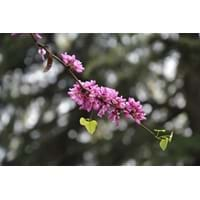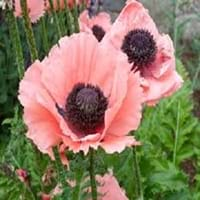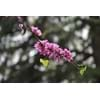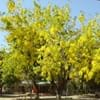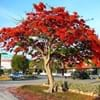Life Span
Perennial
Perennial
Type
Tree
Tender Perennial
Origin
Southern Europe
Western Asia
Types
Not Available
Not Available
Habitat
Lower slopes, Semi arid regions
Lake margins, Lake Sides, Temperate Regions
USDA Hardiness Zone
6-9
3-9
AHS Heat Zone
Not Available
9-1
Sunset Zone
Not Available
A1, A2, A3, 1a, 1b, 2a, 2b, 3a, 3b, 4, 5, 6, 7, 8, 9, 10, 11, 14, 15, 16, 17, 18, 19, 20, 21
Habit
Oval or Rounded
Upright/Erect
Flower Color
Light Purple, Pink, White
Light Pink
Flower Color Modifier
Bicolor
Bicolor
Fruit Color
Brown
Not Available
Leaf Color in Spring
Green, Dark Green
Green, Gray Green, Dark Green
Leaf Color in Summer
Green, Dark Green
Not Available
Leaf Color in Fall
Green, Dark Green
Green, Gray Green, Dark Green
Leaf Color in Winter
Light Green
Not Available
Leaf Shape
Heart-shaped
Aristate
Plant Season
Spring, Summer, Fall, Winter
Spring, Summer
Sunlight
Full Sun, Partial Sun
Full Sun, Partial Sun
Growth Rate
Medium
Medium
Type of Soil
Clay, Loam, Sand
Loam
The pH of Soil
Acidic, Neutral
Acidic, Neutral, Alkaline
Soil Drainage
Well drained
Well drained
Bloom Time
Spring, Late Spring
Late Spring, Early Summer
Tolerances
Drought
Not Available
Where to Plant?
Ground
Container, Ground, Pot
How to Plant?
Seedlings, Stem Cutting
root cutting
Plant Maintenance
Medium
Medium
Watering Requirements
Average Water Needs
Keep the Soil well drained
In Summer
Lots of watering
Lots of watering
In Spring
Moderate
Moderate
In Winter
Average Water
Average Water
Soil pH
Acidic, Neutral
Acidic, Neutral, Alkaline
Soil Type
Loam, Sand
Loam
Soil Drainage Capacity
Well drained
Well drained
Sun Exposure
Full Sun, Partial Sun
Full Sun, Partial Sun
Pruning
Remove damaged leaves, Remove dead branches, Remove dead leaves
Cut away fading foliage, Prune after flowering, Remove damaged leaves, Remove dead branches, Remove dead leaves
Fertilizers
All-Purpose Liquid Fertilizer
10-52-17 after germination, All-Purpose Liquid Fertilizer
Pests and Diseases
Coral Spot, Red blotch, Verticillium Wilt
Pests and diseases free, Red blotch
Plant Tolerance
Drought
Deer resistant, Drought
Flower Petal Number
Single
Single
Fragrant Bark/Stem
Yes
No
Foliage Texture
Medium
Medium
Foliage Sheen
Glossy
Matte
Attracts
Birds, Butterflies
Not Available
Allergy
no allergic reactions
Skin irritation
Aesthetic Uses
Beautification, Ornamental use, Showy Purposes
along a porch, deck or patio, Beautification, Borders, Cottage Garden, Mixed Border, small hedge
Beauty Benefits
Not Available
Not Available
Edible Uses
Yes
Not Available
Environmental Uses
Air purification
Air purification, Deer resistant
Medicinal Uses
No Medicinal Use
Not Available
Part of Plant Used
Flowers, Wood
Flowers, Whole plant
Other Uses
Condiment, Used as Ornamental plant, Used for woodware
Beneficial species for attracting pollinators, Showy Purposes
Used As Indoor Plant
Yes
No
Used As Outdoor Plant
Yes
Yes
Garden Design
Container, Edible, Feature Plant
Feature Plant, Mixed Border
Botanical Name
Cercis siliquastrum
PAPAVER orientale 'Carneum'
Common Name
Judas Tree
Oriental Poppy, Pink Oriental Poppy
In Hindi
ऐस्प
ओरिएंटल पोस्ता
In German
Judasbaum
Türkischer Mohn
In French
Judas arbre
pavot oriental
In Spanish
Árbol de Judas
amapola oriental
In Greek
Ο Ιούδας δέντρο
oriental poppy
In Portuguese
Árvore de Judas
papoila oriental
In Polish
Judasz Drzewo
orientalne maku
In Latin
Iudas ligno
oriental poppy
Phylum
Magnoliophyta
Angiosperms
Class
Magnoliopsida
Magnoliopsida
Order
Fabales
Ranunculales
Family
Fabaceae
Papaveraceae
Clade
Angiosperms, Eudicots, Rosids
Eudicots
Tribe
Cercideae
Not Available
Subfamily
Caesalpinioideae
Magnolioideae
Season and Care of Judas Tree and Pink Oriental Poppy
Season and care of Judas Tree and Pink Oriental Poppy is important to know. While considering everything about Judas Tree and Pink Oriental Poppy Care, growing season is an essential factor. Judas Tree season is Spring, Summer, Fall and Winter and Pink Oriental Poppy season is Spring, Summer, Fall and Winter. The type of soil for Judas Tree is Clay, Loam, Sand and for Pink Oriental Poppy is Loam while the PH of soil for Judas Tree is Acidic, Neutral and for Pink Oriental Poppy is Acidic, Neutral, Alkaline.
Judas Tree and Pink Oriental Poppy Physical Information
Judas Tree and Pink Oriental Poppy physical information is very important for comparison. Judas Tree height is 450.00 cm and width 454.00 cm whereas Pink Oriental Poppy height is 76.20 cm and width 45.70 cm. The color specification of Judas Tree and Pink Oriental Poppy are as follows:
Judas Tree flower color: Light Purple, Pink and White
Judas Tree leaf color: Green and Dark Green
Pink Oriental Poppy flower color: Light Pink
- Pink Oriental Poppy leaf color: Green, Gray Green and Dark Green
Care of Judas Tree and Pink Oriental Poppy
Care of Judas Tree and Pink Oriental Poppy include pruning, fertilizers, watering etc. Judas Tree pruning is done Remove damaged leaves, Remove dead branches and Remove dead leaves and Pink Oriental Poppy pruning is done Cut away fading foliage, Prune after flowering, Remove damaged leaves, Remove dead branches and Remove dead leaves. In summer Judas Tree needs Lots of watering and in winter, it needs Average Water. Whereas, in summer Pink Oriental Poppy needs Lots of watering and in winter, it needs Average Water.
